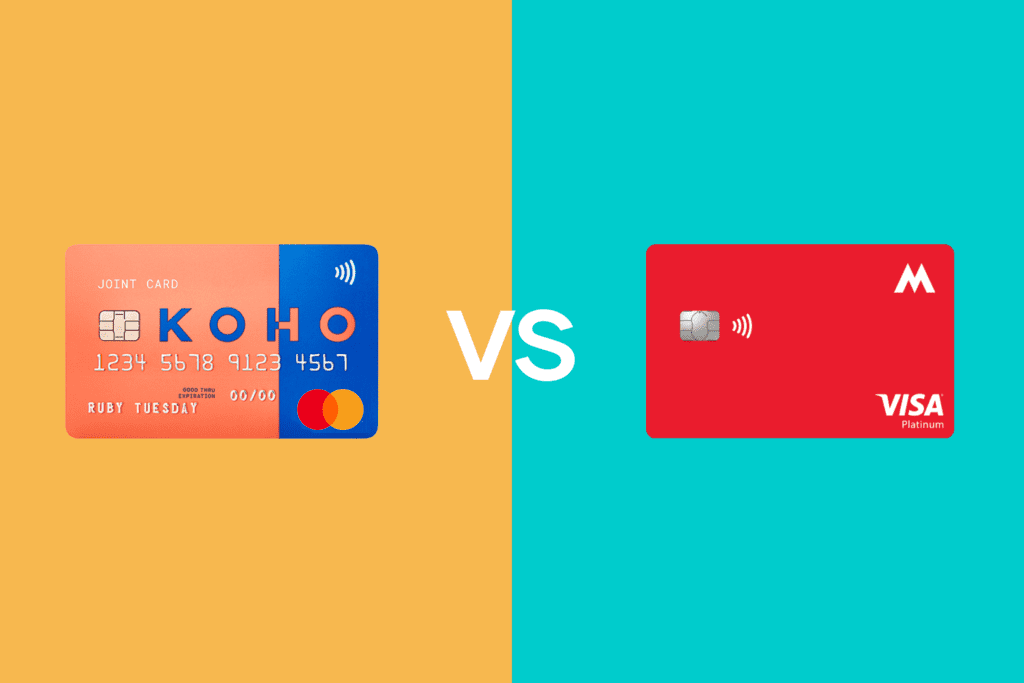
Prepaid cards are both exciting and secure. They come with a variety of benefits including excellent security features, attractive rewards, and low fees. You will find a variety of companies offering prepaid cards in Canada including KOHO and Mogo.
Both companies offer reloadable prepaid cards that can be used to shop online or offline. In this article, we’ll compare KOHO and Mogo prepaid cards and look at what they have to offer. The purpose of this KOHO vs Mogo article is to help you determine the better option so you can choose the best prepaid card in Canada. Now without much ado, let’s get started!
Introduction to prepaid cards
Also known as stored-value cards, prepaid cards come with a specific monetary value and certain limits. While most prepaid cards work like credit cards, they don’t offer features such as loans and can be acquired without going through a credit check
Prepaid cards, however, work just like traditional credit cards. They are both physical and virtual but virtual cards can only be used online. Physical cards, on the other hand, can be used anywhere and look just like traditional cards. They typically contain the name of the owner, the card number, expiry date, and security code.
Most companies offer a variety of ways to recharge prepaid cards but we must mention that not all cards are reloadable. Also, there may be certain fees associated with these cards such as withdrawal fees and foreign transaction charges. This is why it is important to compare prepaid cards in Canada and pick the one that fits you well.
Introduction to KOHO and Mogo
KOHO and Mogo are Canadian companies offering financial products and services such as prepaid cards. Founded in 2003 by David Marshall Feller, Mogo is one of the oldest companies offering prepaid cards in Canada. The business is known for pushing the ‘green' initiative and places special emphasis on environmental issues.
Called MogoCard, the prepaid card is issued in partnership with People’s Bank. This is important because Mogo itself is not a bank. Interestingly, KOHO, established in 2014, has also partnered with the same bank to issue prepaid cards.
Both companies are headquartered in Vancouver and are known for being safe and reliable. KOHO’s founder and CEO, Daniel Eberhard, thought of the concept when he realized that people had to pay excessive bank charges to enjoy basic services. He started KOHO to solve this problem and the business is now one of the largest fintech firms in Canada offering prepaid cards.
Mogo, on the other hand, is also quite reliable and now offers a wide variety of services including crypto trading and stocks. The company promises to plant a tree every time you use their prepaid card. While they both offer similar cards, there are some differences in terms of fees, limits, and rewards. Also, these cards come from different companies. Mogo offers a Visa prepaid card, whereas KOHO offers a Mastercard card.
Read our in-depth reviews of these cards:
KOHO Mastercard® versus Mogo Visa: a comparison
KOHO offers multiple prepaid cards including KOHO Mastercard® prepaid card and KOHO Mastercard® Premium prepaid card. On the other hand, Mogo offers a single card called the MogoCard. KOHO cards work at all physical and virtual stores that accept Mastercard, and MogoCard works at all online and physical stores where Visa is accepted. These cards differ in terms of limitations, rewards, and fees. Given below is a small breakdown to help you compare both options:
KOHO Mastercard® versus Mogo Visa fees
Both companies are affordable and offer cards that are cheap to own. There are no annual or monthly charges for the MogoCard. The basic KOHO card is also free to own, however, you will have to pay $9 per month to own the KOHO Premium card.
| KOHO | KOHO Premium | Mogo | |
| Monthly fees | $0 | $9 | $0 |
| Foreign exchange fees | 1.5% | 0% | 2.5% |
| Automated Teller Machine (ATM) withdrawal fees | $0 | $0 | $1.50 (domestic)
$3.00 (international) |
| Inactivity fee | $0 | $0 | $1.99 |
If you look at the fee structure, you’ll see that KOHO is more attractive. The company will not charge you for ATM withdrawals, whereas Mogo does. Both domestic and international withdrawals are free with KOHO but there’s a cap on international withdrawals. You will only get one free transaction per month. It will cost you $3 for every subsequent transaction.
Also, there may also be external charges when you use an ATM. These can range between $2 and $5 per transaction and are charged by the ATM provider and not by Mogo or KOHO. Also, you can avoid some of these fees by being smart. The Inactivity fee, for example, is only charged when you don’t use your card for 365 days and your balance is above $0. Being active or making sure you exhaust the card can help avoid these charges.
KOHO Mastercard® versus Mogo Visa rewards
This comparison is simple. KOHO offers discounts in the form of cash back starting as low as 0.5 percent and going as high as 5 percent. Partner brands include Baskin Robbins, Frank and Oak, Bounce, Kernels, Pizza 73, Attitude, Contiki, Buffalo, and more.
It can take up to 48 hours for cash to appear in your account. On the plus side, no special codes are required to avail these offers. Swipe your card at partner stores and your job will be done.
Mogo didn’t have similar partnerships until last year. The company introduced an impressive cash back offer in 2021. You will earn 1% Bitcoin cashback reward for every eligible purchase made using your MogoCard. With Bitcoin fast gaining momentum, it can turn out to be a very beneficial deal.
The money earned will get deposited into your account every month. Rewards are capped at $3,100 and are added to your rewards account. You must have at least $500 to be able to withdraw or use this money. In addition, the company will plant a tree every time you use your MogoCard.
KOHO Mastercard® Versus Mogo Visa Limitations
Like most companies, both Mogo and KOHO have put some limitations on card usage. It is important to pay attention to this factor because limitations can spoil your plans. Here’s a chart for comparison:
| KOHO | KOHO Premium | Mogo | |
| Maximum balance | $40,000 | $40,000 | $10,000 |
| Direct load fee | 75¢ for transactions under $300 | – | $0 |
| Minimum load | – | – | $10 |
| Maximum load per month | $40,000 | $60,000 | – |
| Maximum load per day | – | – | $9,900 |
| Maximum deposit | 10 | 40 | – |
| Maximum transfers per month | 60 | 150 | – |
| Maximum transfers per day | – | – | 10 |
| Maximum ATM withdrawal per day | $600 | $800 | $500 |
| Maximum ATM transactions per day | 5 | 5 | 1 |
| Maximum point of sale (POS) amount per day | $4,000 | $4,000 | $5,000 |
| Maximum transaction size | – | – | $3,000 |
Mogo might not look very attractive given the low maximum balance of only $10,000. KOHO hits the bull's eye thanks to a high maximum of $40,000. But, Mogo does have a few advantages including a higher maximum POS amount per day.
KOHO versus Mogo: comparing Canada’s best prepaid cards
Both the KOHO and Mogo prepaid cards are smart credit options. They work the same way. What you need to do is get into the weeds a bit.
KOHO versus Mogo: safety
Safety is of huge importance since it’s real money on the line. There are two things to take care of, your data and your money. We compared several aspects and found that both companies offer the same level of privacy and safety.
Since they both work with People’s Trust, they are on the same level when it comes to security. The bank is a member of the Canada Deposit Insurance Corporation (CDIC) and enjoys an excellent reputation. Your money will be safe. Also, both cards come with the Zero Liability Purchase Protection Plan provided by Mastercard for KOHO and Visa for Mogo.
Signing up for a new account
You will have no difficulty in getting a new card because you can submit your applications online. Since prepaid cards are not credit cards, there is no need to worry about your credit score. In fact, companies will not even run a credit check. You can get a card even if your credit score is poor.
It will only take a few minutes to sign up for a new account. You will be asked to submit some valid documents to verify your identity and address. Mogo only issues cards to Canadian citizens or permanent residents. KOHO, however, also entertains temporary residents. You will need an address in the country to qualify as cards are sent via mail.
It can take about a week for physical cards to arrive; however, you may start to use virtual cards for online shopping right away by accessing information through the mobile app. Also, you must be 18, or 19 in some cases, to qualify.
What about the mobile app?
Both companies offer mobile apps that do a variety of tasks. They support both Android and iOS devices and take very little space. We found both apps easy to use. There isn’t much of a learning curve as these apps are quite basic with self-explanatory tabs.
KOHO’s app is quite impressive with some great features. We loved the ‘financial coaching’ section as it comes with some great benefits. It’s designed to help users deal with financial issues including debt. Also, make sure to have a look at the tracking option that can help you keep track of your spending habits.
It can make it easier to create and stick to a budget and know where most of your money goes. The app even contains graphs that make it easier to comprehend information. Similarly, the Mogo app is brilliant as well. You will even be able to keep an eye on your credit score with it.
Just like KOHO, Mogo will also let you keep a tab on your spending. The app lets you do everything that you can do on a computer from keeping an eye on your card to buying and selling digital coins. The app isn’t just for MogoCard users as it covers almost all the products and services the company offers.
KOHO and Mogo digital wallets
The world is going digital and more and more people are now choosing to use digital wallets to shop online and offline. KOHO supports some of the most popular options including Samsung Pay, Apple Pay, and Samsung Pay. You’ll enjoy greater ease and safety with this feature.
Mogo isn’t very far behind either. It supports the same top wallets: Samsung Pay, Apple Pay, and Samsung Pay. You can set these up through the mobile app. The process is easy and will only take a few minutes.
KOHO and Mogo: how to deposit money
Both Mogo and KOHO offer reloadable cards and a variety of ways to add money to your account. KOHO allows users to deposit money through existing bank accounts or Visa debit cards. In addition, the company even supports direct deposits. It can be a little tricky to set these up but this method is among the most reliable ways to add money to your KOHO card.
Both companies do not support cash and cheques but e-transfers are possible. Mogo supports bank transfers from some popular names including Scotiabank, TD Bank, and CIBC. In addition, e-transfers are also possible.
The time it takes for money to reach your account depends on the method of your choice. Some are instant and some can take up to two days. But, we found that Mogo is faster than KOHO in most cases.
KOHO versus Mogo: referral bonuses
This comparison can be a little confusing. If you search the web, you will find that Mogo offers $75 for every referral, which is pretty impressive. However, this isn’t straightforward and not everyone will qualify. You will earn this bonus only if your referred users buy specific products.
On the other hand, KOHO offers $20 per user. Moreover, the new user will also earn $20 for joining KOHO. We think it is a win-win situation and while the bonus isn’t as high as what Mogo offers, qualifying is easier because the new user only has to sign up for a new account to qualify. The maximum bonus is $1,000 and one user can be referred just once.
Which company offers better customer support?
Customer support is important since you may need to get in touch with the team to solve issues. We tested both companies and they came out with flying colours. There are multiple ways to contact each including email, live chat, and phone.
The KOHO team is available from Monday to Friday from 9 AM to 9 PM EST and from Saturday to Sunday from 9 AM to 5 PM EST. KOHO agents are very friendly, professional, and well-informed. We were impressed with how helpful they were.
Emails are usually responded to in less than two days. Also, the live chat feature is excellent and agents are able to solve issues within minutes. But, agents might not be able to solve all issues immediately. Since both KOHO and Mogo work with different partners including People’s Bank, some issues have to be forwarded to them.
We had a good experience with Mogo as well. They also offer live chat, email, and phone support. Call 800-944-6646 to talk to an agent. They're available Monday to Friday from 8:00 AM to 5:30 PM CST. It will not be wrong to state that both companies are on the same level when it comes to customer support.
KOHO extra features
We have already covered the basics of the KOHO Mastercard® Prepaid Card, but that’s not it. The card comes with some additional features that make it one of the best prepaid cards in Canada. Here’s what you need to know:
RoundUp
RoundUp, as the name suggests, is a special tool from KOHO that helps users save money through spare change. Once you activate this tool, all purchases you make through the KOHO card will be rounded to the nearest figure. You can choose from $1, $2, $5, or $10. The spare change will be added to your account with the option to withdraw it later once it reaches a decent threshold.
This might not sound much to some people but it can help you save a few hundred dollars every month. In simple words, if you spend $2.30 on a service or product, you will be charged $5 or $10, based on your choice. You will only pay $2.3 to the seller and the remaining amount will go to your account, which you can use later.
Interest payments
Don’t worry about money sitting in your KOHO account as the company offers card owners a chance to make money. Just like banks, you will earn interest on your deposit. The rate is 1.2 percent, which is in line with what most banks in the country offer. The money will be in your account and can be used to make purchases.
Early payroll
This is one of our favourite KOHO features. It allows users to receive up to $100 from their paycheque three days before the due date. It can turn out to be very useful for people who need cash. Moreover, the company even gives the option to receive it sooner for a small fee of $95.
There are no limits on how to use this money. It will appear on your account and you’ll be able to use it to make purchases or withdraw from an ATM. This money will be deducted when you receive your next pay.
You will need to submit an application online and have your office sign relevant documents. It can take a few days to receive approval so make sure to apply in advance. There are no charges for this feature.
Mogo extra feature
The Mogo Visa Platinum Prepaid Card offers some additional pros including:
Free identity fraud protection
You will receive monthly updates from Mogo to help you keep an eye on your finances. This helps identify suspicious transactions. Check your report to ensure there are no strange transactions under your name. Report to the relevant authorities if you see accounts or transactions that you do not recognize.
Free credit score monitoring
It is important to keep an eye on your credit score to ensure you meet your financial goals. As a Mogo user, you will receive your free credit score every month. This is an add-on that is available for free.
Green Earth
Mogo wants the earth to heal and the company has joined hands with another Vancouver-based business, Veritree, to plant a tree every time someone uses their MogoCard for a purchase. Climate change is a real problem and the company is giving people a chance to play an important role in correcting it. Those who care about the environment will love working with Mogo.
KOHO vs Mogo: which card to choose?
It can be hard to pick one card as both have their pros and cons. Go for Mogo if you want a basic card that allows you to shop online, makes it easy to try your hands at crypto, and saves the environment. The Mogo Platinum Visa Card is affordable and very easy to reload.
KOHO offers better features and benefits. It’s also very affordable to own and is more generous due to fewer limitations. You’ll enjoy better rewards as well but KOHO doesn’t offer the wide variety of services Mogo does. As a Mogo user, you will be able to trade stocks and cryptos as well. KOHO doesn’t support such transactions.
In the end, the right option depends on you. Compare both cards and pick one that fits you the best. Also, you can use both cards. It will not impact your credit score and having two cards can prove to be beneficial.
Alternatives to the KOHO Mastercard® Card and the MOGO Visa
If you think these cards are not for you, here are some alternatives that may be better for you.
STACK Prepaid Mastercard
The STACK Mastercard is a prepaid credit card with no fees and can be used to make purchases and withdraw cash from ATMs. It is perfect for those who want to control their spending but don't want to sacrifice the convenience of having a credit card.
Canada Post Cash Passport Mastercard
The Canada Post Cash Passport Mastercard is a prepaid credit card that you can use to withdraw cash, pay bills or make purchases at any business that accepts Mastercard.
The card is available to Canadians over the age of 18 who have a Canadian address and a valid social insurance number. You can apply for the card online, in person at a Canada Post outlet or by phone.
The BMO Prepaid Travel Mastercard
The BMO Prepaid Travel Mastercard is a secure payment card prepaid with your own money. You can top it up and use it anywhere Mastercard cards are accepted. A really good option for the traveler in you.
Compare the different prepaid credit cards and choose the one that suits your needs!
Frequently Asked Question
What are the advantages of a reloadable prepaid card?
A reloadable prepaid card is often a more convenient way to spend money. It's like a debit card but without the associated bank account. You can combine the benefits of today's most popular payment options – credit cards, debit cards and cash – into one easy-to-use card that lets you reload as often as you like.
Where can I buy prepaid credit cards?
There are a variety of places to buy prepaid credit cards. The best place to get the right card is online. Check out our list of the best prepaid credit cards.
How do Visa Prepaid cards work?
Visa Prepaid cards are an easy, convenient and affordable way to pay. You can use them anywhere credit cards are accepted, without needing a bank account or credit card.
Can I withdraw money from a Visa Prepaid card?
Prepaid cards can be used to withdraw money from certain ATMs. They are subject to a network fee.
How does a prepaid travel card work?
Prepaid travel cards are a great way to save money on airline tickets and other travel expenses. They are accepted worldwide depending on the network used, for example Visa, Mastercard or Amex.
Can I use a prepaid card on Amazon?
Yes, you can use a prepaid card on Amazon and most merchants accept Visa or Mastercard.
Does Uber accept prepaid credit cards?
Yes, Uber accepts prepaid credit/debit cards.



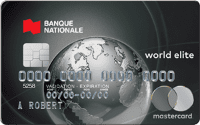
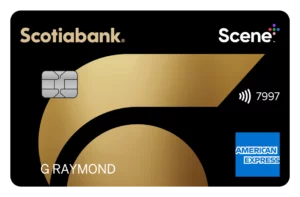





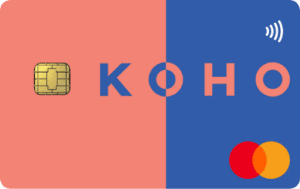
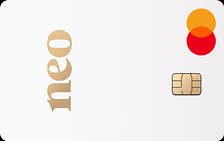




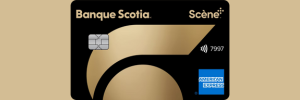




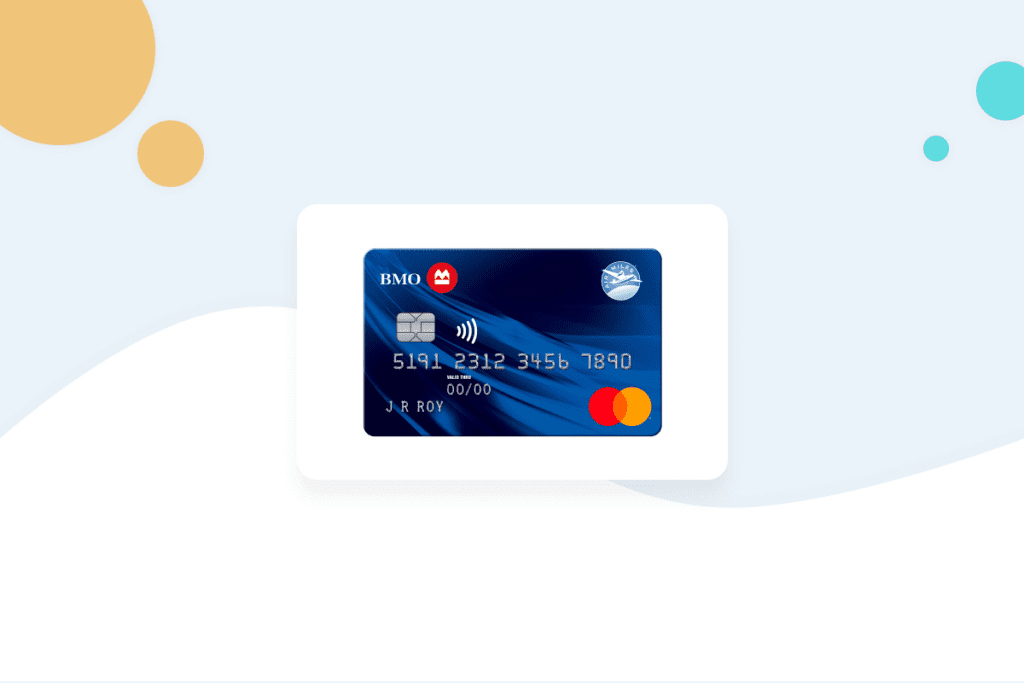



About The Author: Michael Wight
Michael Wight is a full-time freelance writer with over 15 years of writing experience. He is heading his own content writing firm, Michael Words, and also contributes to other websites. He is a digital marketing expert and enjoys playing musical instruments in his free time. You can find Michael on Upwork as Michael W. and he is also associated with Michael Words.
More posts by Michael Wight